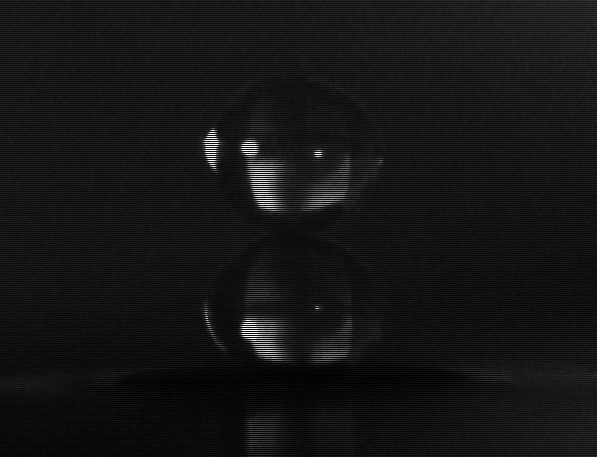Drops falling on a flat water surface will create a vortex ring as the drop merges with the bulk fluid. This is easily visualized by allowing a drop of colored dye to fall onto a clear container of water. The result is a colored vortex ring, much like the green ring shown in the image above. This ring was obtained by Nathan K. Grizzard using the apparatus shown in the image below.
The goal of this research is to determine how surfactant monolayers affect the speed and penetration depth for a drop induced vortex. While drop induced vortices have been investigated for over a century, the role of surfactants in this process has not been addressed. This is especially surprising since surface tension is suspected to be the force which propels the vortex.
Recent research completed by Nathan K. Grizzard demonstrated that the velocity at which a vortex penetrates into the water bulk is affected by the presence and concentration of a surfactant monolayer on the water surface. The following figure is a plot of vortex velocity versus drop height. Several data sets are plotted, each at a difference concentration of the surfactant oleyl alcohol. This surfactant was located on the water surface only, and not on the drop.

These plots show that the maximum penetration velocity occurs not for a clean surface, and not at very large concentrations of oleyl alcohol, but rather at an intermediate oleyl alcohol concentration.
The next step in this work is to ascertain how the shape of the water drop affects the penetration velocity of the vortices. To do this, stroboscopic images of the drop will be obtained just prior to its impact with the free surface. By correlating the shape at impact to the measured vortex velocity, we will be able to determine the role that shape plays in creating `good' vortices. This work is currently underway and is being done by Robert H. King, an undergraduate researcher. The following image is a preliminary stroboscopic image of a water drop just prior to striking a water surface. Two drop images are visible due to dual strobe pulses during the time frame during which the image was acquired. The strobe fired at 10,000 Hz during this image sequence.

(image by R. H. King).
Last Updated September 22, 2006.